Guillermo del Toro is one of the most distinctive and visually interesting directors regularly working today, one whose work could be identified by just a still image, such are del Toro’s clear aesthetic sensibilities. He is a very hands-on director, working closely with production and costume designers to bring his original ideas to life, and as such his films have featured an array of weird and wonderful props (our stock in trade, don’t you know?). Here is just a sample of the amazing items from his films.
Hellboy’s Guns – Good Samaritan and Big Baby | Hellboy Film Series (2004 – 2008)
“Big Red” has two firearms he busts out when the going gets tough. His primary firearm is the Good Samaritan, a massive 22mm, four-round revolver which is loaded with custom-made rounds of Hellboy’s creation, including “Whoppers” and tracking rounds.
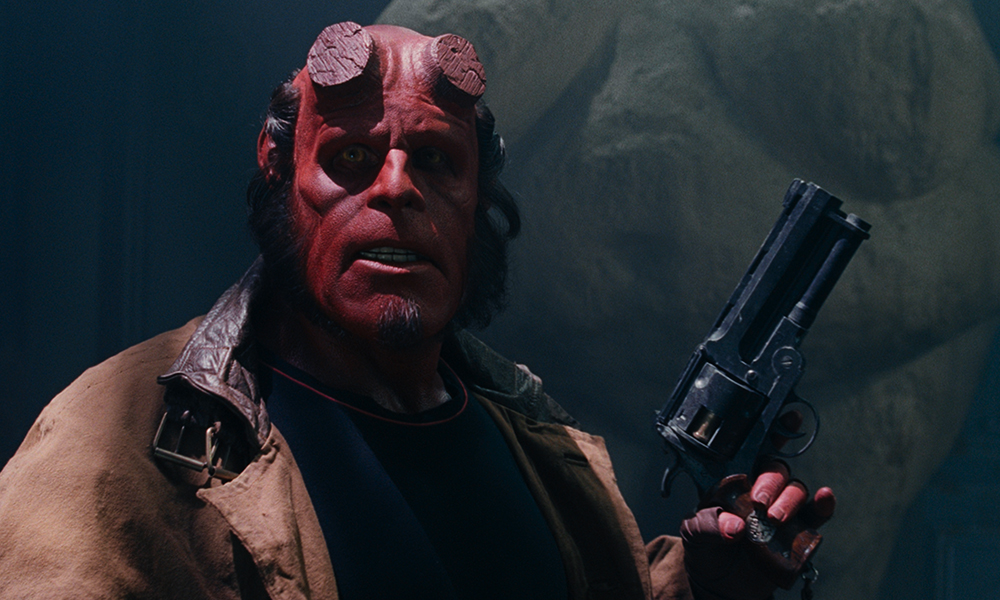
But sometimes the Good Samaritan is just a little, well, puny for some of the monsters that Hellboy fights, and that is when the Big Baby gets a run out. The huge six-round gun fires oversized shotgun shells which cause small explosions and Hellboy used it to take down the ancient Forest God on the streets of New York.
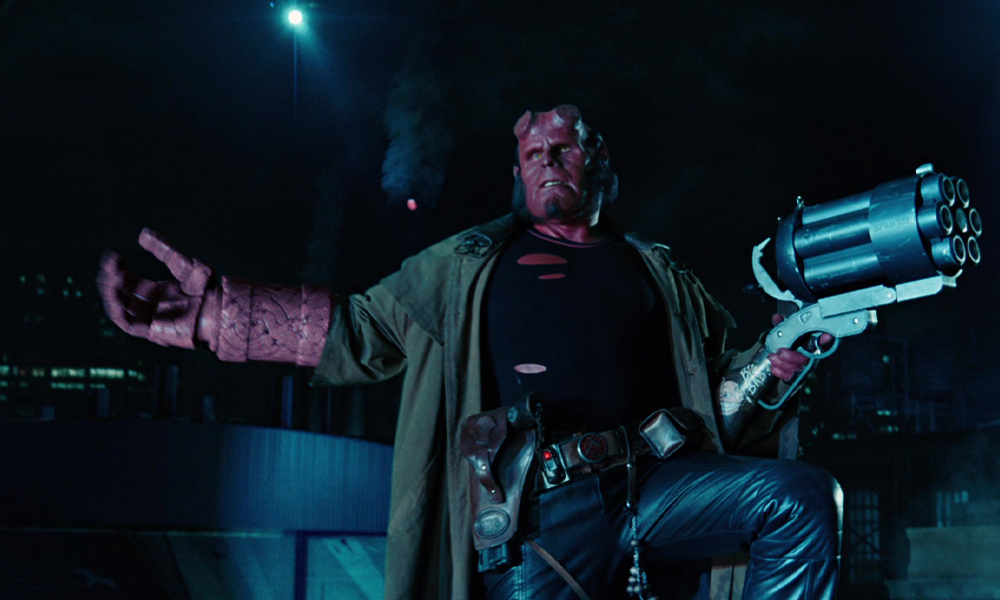
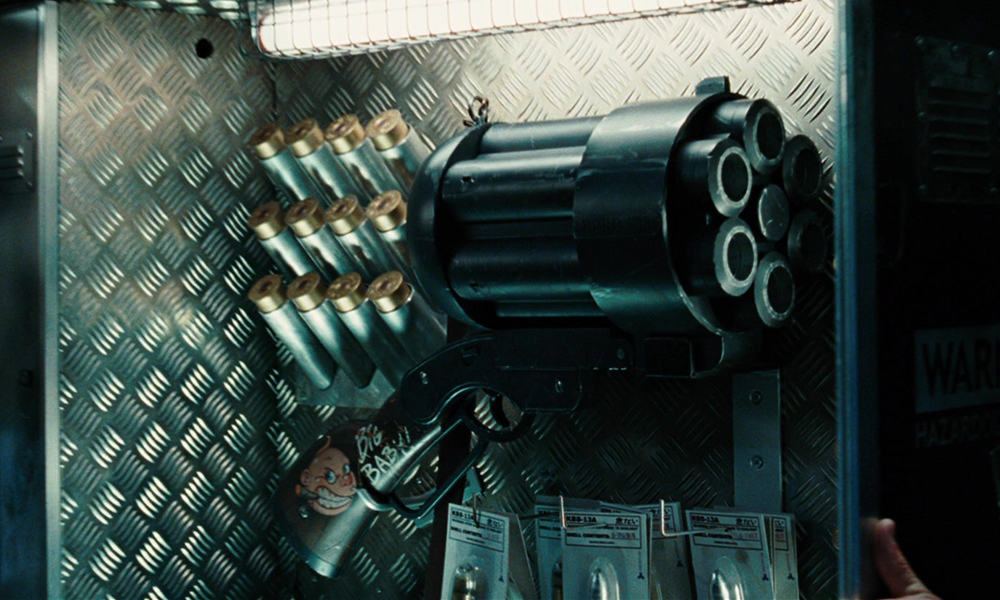
GDT originally envisioned the Good Samaritan having absolutely huge ammunition and being an automatic weapon, which ejected the used shells out of the side. Unfortunately, he and the production team found this to be an impractical idea. The desire for massive ammo remained though, and found its way into Big Baby. Despite Good Samaritan being an oversized pistol, it looks relatively normal in the hands of the equally oversized Hellboy, so GDT designed a weapon that would look big even for him, so much so that he carried it two-handed.
While Hellboy as a character did not originate with GDT (that honour obviously lies with comic book artist Mike Mignola) the whole look of both films – from the Troll Market, to Sammael, to the Angel of Death – is distinctly del Toro.
Cronos Scarab Device | Cronos (1992)
Cronos was GDT’s first feature film. Released in 1992, it starred Federico Lippi and Ron “Hellboy” Perlman and demonstrated that GDT was a filmmaker with a distinct vision and style right from the off. Perlman has even recollected thinking GDT was in the same class as Truffaut and Buñuel after seeing the initial imagery for the film.
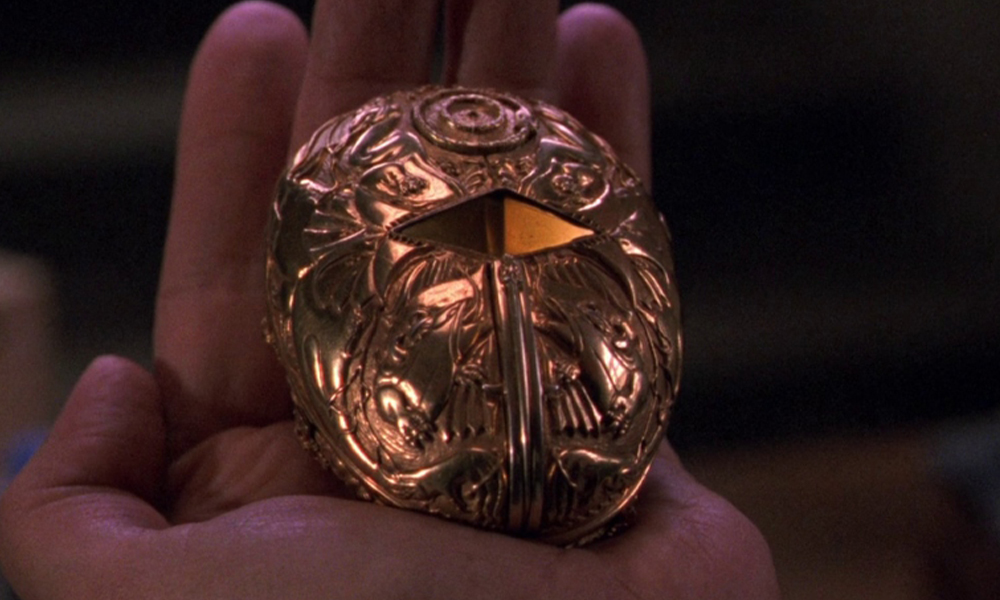
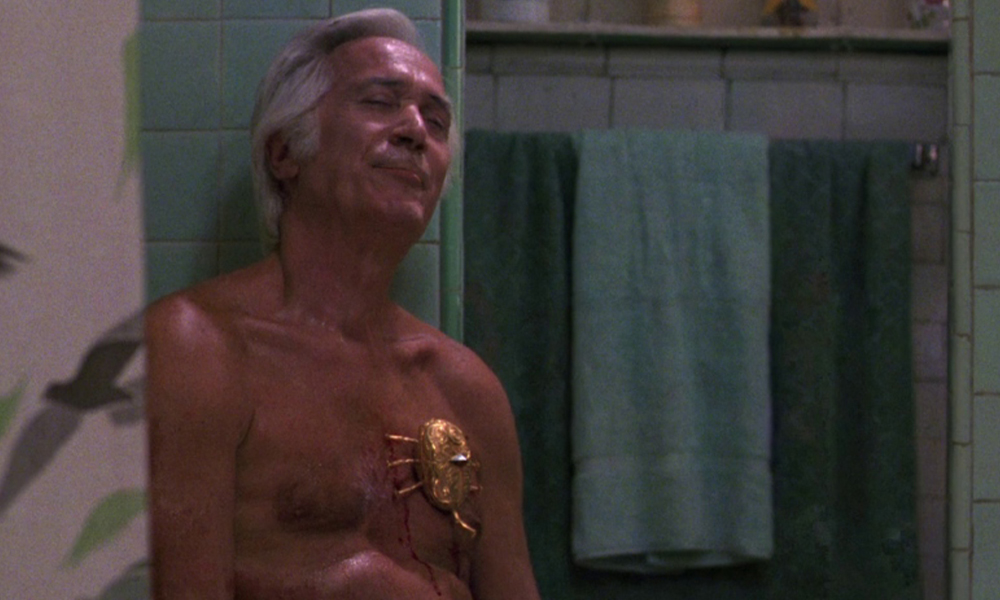
Central to Cronos’ plot is the scarab device, a mechanism which can grant eternal life after it latches itself to the wearer’s chest. But, as is the case with a lot of devices made by mysterious alchemists unearthed from secret hollow chambers found in the base of archangel statues, it does have some downsides. Namely, a thirst for blood. In del Toro’s book “Cabinet of Curiosities” he discusses the creative process for several of his films and it is illustrated with del Toro’s own drawings and notes. He recounts that during the production of Cronos that he met with James Cameron for dinner and, being the poor indie filmmaker he was, heartily took Cameron up on his offer to eat and drink as much as he wanted. Both filmmakers got a little sloshed and GDT offered Cameron his notebook from the Cronos production, featuring sketches, designs, handwritten ideas and more. He accepted, the notebook was handed over and then never seen again, although del Toro notes that as Cameron has not moved house since, there is hope that it is somewhere around chez Cameron. So one day the original design of this piece may see the light of day, but don’t hold you breath.
The Book of Crossroads | Pan’s Labyrinth (2006)
GDT’s best film? Quite possibly, but that’s not what this article is about, stop making me go off topic. This article is about a book – The Book of Crossroads to be precise. Young Ofelia (Ivana Baquero) is handed the book by the Fawn (the inimitable Doug Jones) and uses it to discover the three tasks she must complete. GDT certainly has the tendency to go big and ornate with some of his visual flourishes, but he also knows when to keep it lowkey as well.
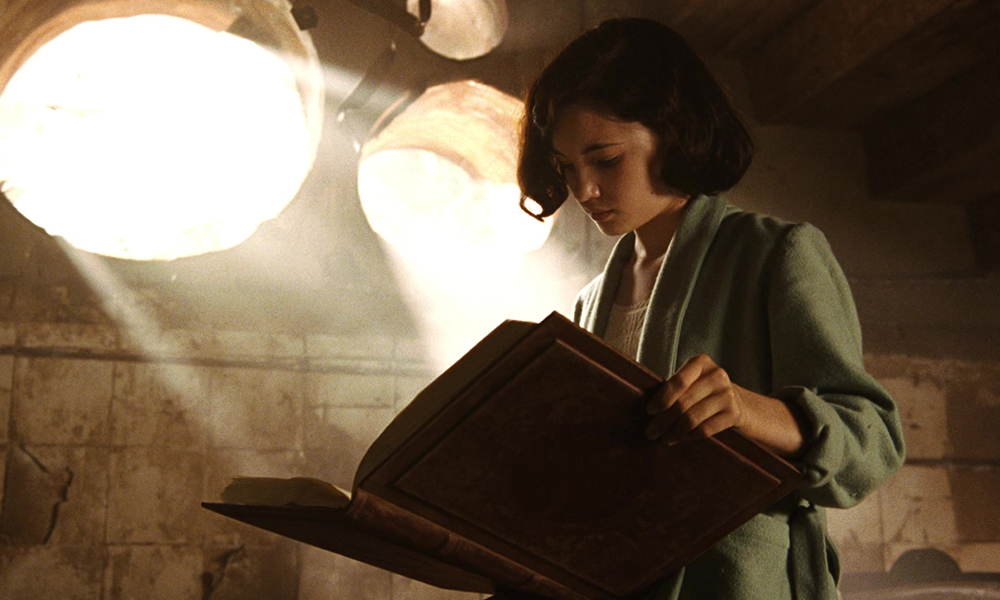
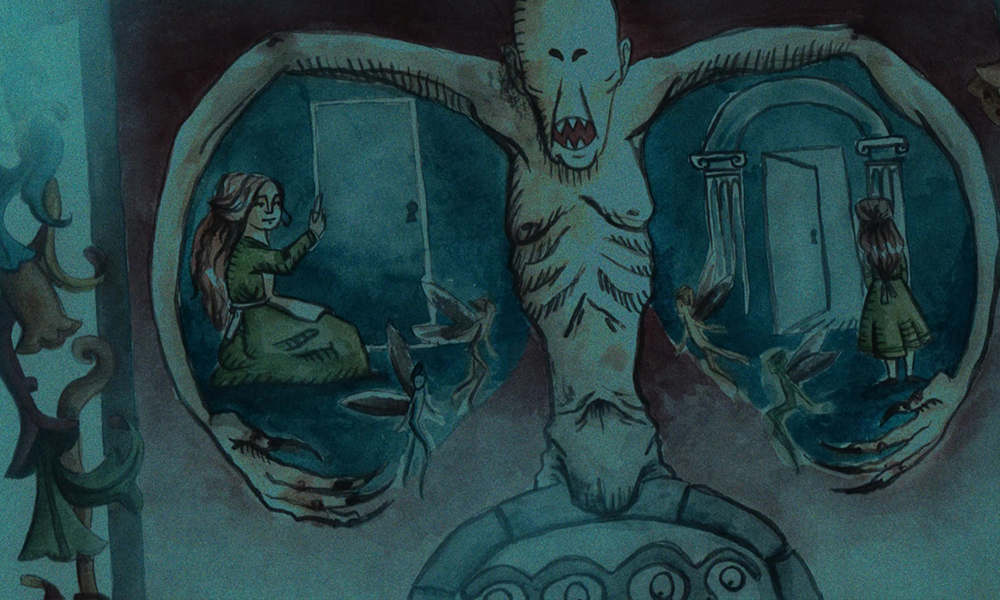
The brown leather hardback book features simple patterning on the cover, but it is on the inside, when the text and imagery magically appear on the page, when the book comes to life. Only two of the books were made for the production, making it a rare and sought after item.
Hannibal Chau’s Sunglasses | Pacific Rim (2013)
Is Ron Perlman the coolest? The answer is of course: yes. Science has proved it time and time again and it is now taught alongside gravity and the Solar System in textbooks the world over. The better question is: would Ron Perlman be as cool as he is if he hadn’t met Guillermo del Toro? That is the one great unknowable answer still plaguing humanity.
Together they have made seven films, starting with Cronos in 1992. Perlman was already a Golden Globe winner for his performance in the TV series Beauty and the Beast, and had appeared in several films, but he was by no means a star at this point in time. He took a chance working on Cronos (the film is in Spanish, which Perlman does not speak) and would later do the same on Marc Caro and Jean-Pierre Jeunet’s The City of Lost Children (which is in French, yet another language which Perlman does not speak), proving he is a man willing to take risks for his craft (a definite tick in the cool column).

Perlman’s role as black marketeer Hannibal Chau in Pacific Rim is small but fun, the kind of role that Perlman has made his own. Part of the character’s innate ‘cool’ (there’s that word again) comes from Perlman, but part of it is down to character design. Character design is an incredibly important part of the filmmaking process, as how a character looks can tell you so much about them at just a glance. Chau has pointed, gold-toed shoes; a red velvet suit; golden grills on his teeth; and circular sunglasses with side shields (a pair of which were sold by Propstore in 2014). This shows he is eccentric, vain and materialistic (and is he hiding something behind those glasses), and that is without him having to even speak! GDT’s characters and the worlds they inhabit are designed so very carefully that even seeing a still of them can be enough to identify them as a GDT picture. Which brings us on to…
Everything | Crimson Peak (2015)
Crimson Peak is arguably one of GDT’s least appreciated films. Pretty well received, critically speaking, it didn’t connect with audiences in the same way as many of his others. While Rotten Tomato scores should be taken with a pinch of salt, they have become a popular barometer of a film’s quality, and Crimson Peak currently sits at a 73% score with critics but only a 55% score with audiences (again, I know that Rotten Tomatoes is beset with problems which means these scores are often not accurate, so don’t @ me). These numbers, and a less-than-ideal box office return, suggest that not a lot of people saw Crimson Peak, and that needs to start changing.
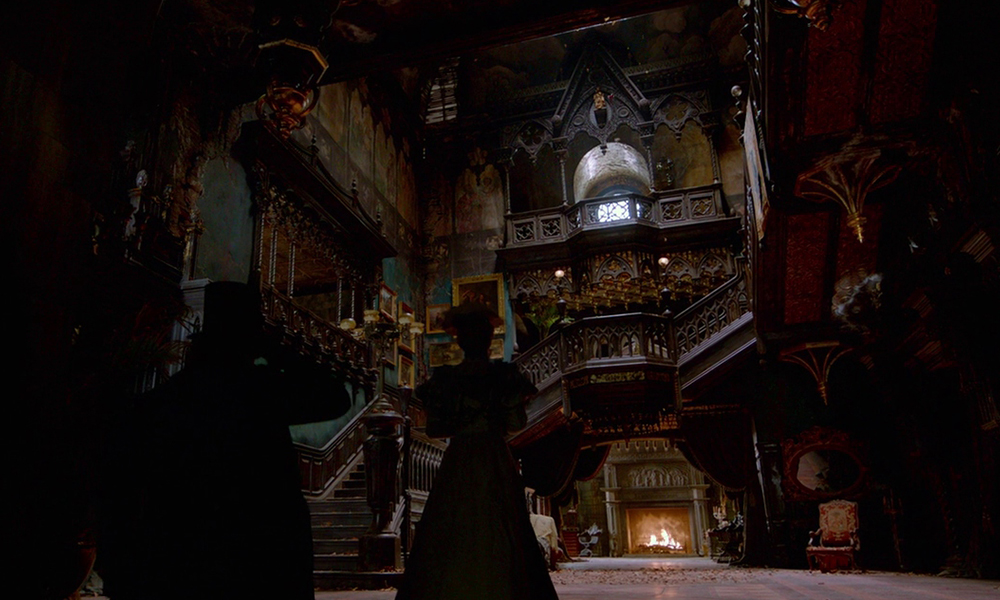
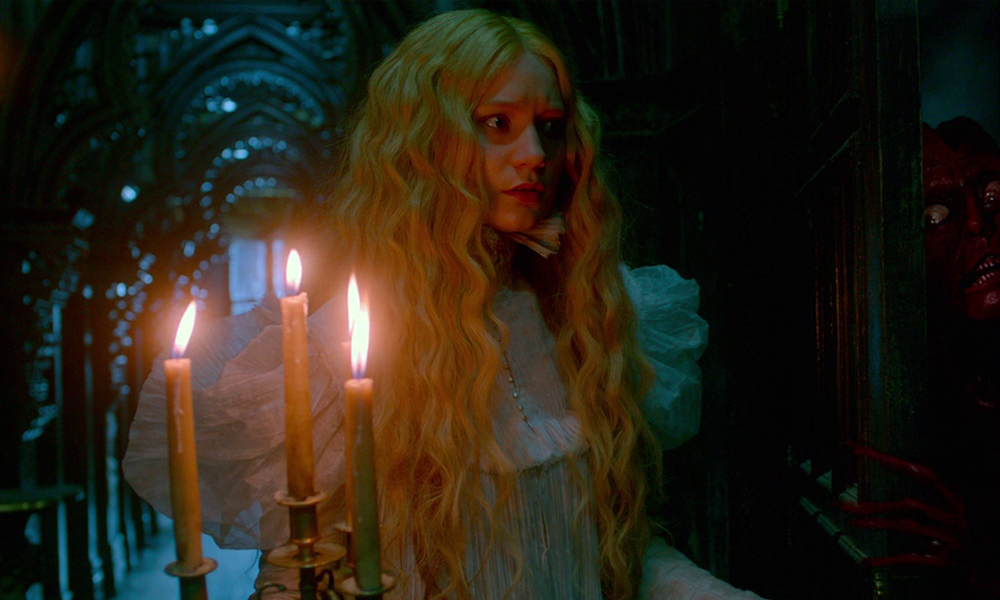
It is one of GDT’s most visually arresting films – a gothic horror-romance set in a large mansion in the middle of the Northern English countryside, with long corridors lined with spiked decorations and high-ceiling staircases with walls adorned with portraits. It seems quite cliche to say, but the house is really a character in itself, and throughout the film you can see GDT’s love of all things Victorian, which he has spoken about in previous interviews.
It’s no surprise that GDT has been nominated for a total of seven Oscars, winning two (Best Picture and Director for The Shape of Water), with one pending. He’s a filmmaker that always tries something interesting, thoughtful and innovative, even if you don’t think everything he does is a success. At Propstore we’re definitely looking forward to seeing what he does next!